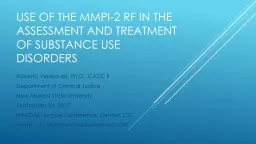PDF-Honouring Our Strengths:A Renewed Framework to Address Substance Use I
Author : pasty-toler | Published Date : 2016-04-24
rf ntbrnrn enewed Framework to Address Substance ssues Among First ations People in Canada enewed Framework to Addre
Presentation Embed Code
Download Presentation
Download Presentation The PPT/PDF document "Honouring Our Strengths:A Renewed Framew..." is the property of its rightful owner. Permission is granted to download and print the materials on this website for personal, non-commercial use only, and to display it on your personal computer provided you do not modify the materials and that you retain all copyright notices contained in the materials. By downloading content from our website, you accept the terms of this agreement.
Honouring Our Strengths:A Renewed Framework to Address Substance Use I: Transcript
Download Rules Of Document
"Honouring Our Strengths:A Renewed Framework to Address Substance Use I"The content belongs to its owner. You may download and print it for personal use, without modification, and keep all copyright notices. By downloading, you agree to these terms.
Related Documents














